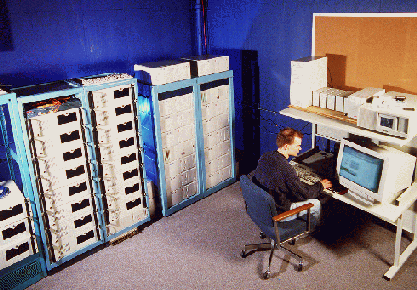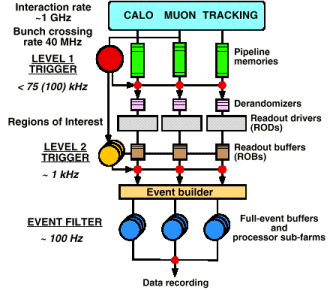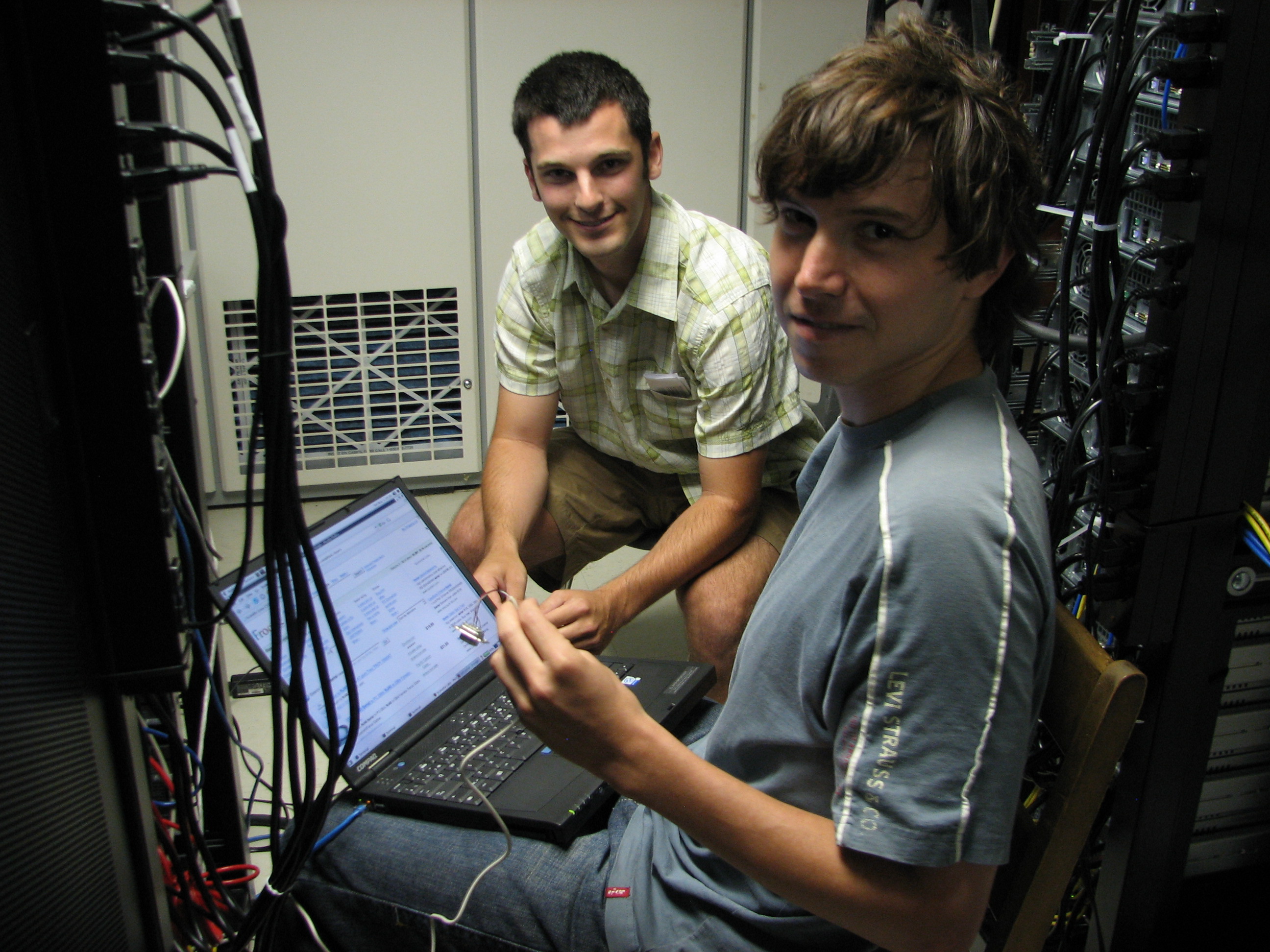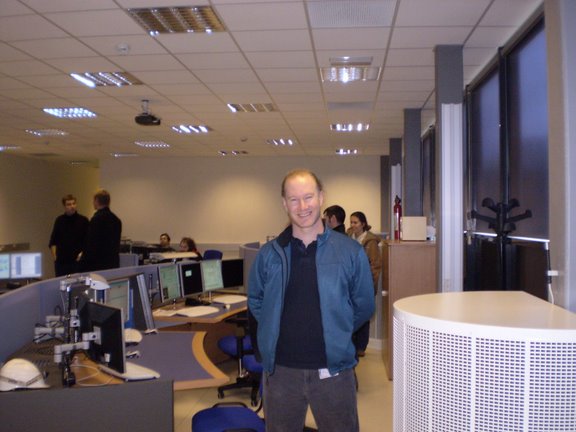

 In the ATLAS detector there will be about a billion collision events per
second, a data rate equivalent to twenty simultaneous telephone conversations
by every person on the earth. When protons collide, some events are
"interesting" and may tell us about exciting new particles or forces, whereas
many others are "ordinary" collisions (often called "background"). Only 10 to
100 of the billion collisions that occur each second must be flagged as
potentially interesting and recorded for further study, while all the others
are rejected. That information must be obtained and analyzed very
rapidly. Furthermore the information must be sufficiently detailed and
precise to allow eventual recognition of certain "events" that may only occur
at the rate of one in one million-million collisions (10-12), a very small
fraction of the recorded events, which are a very small fraction of all
events.
In the ATLAS detector there will be about a billion collision events per
second, a data rate equivalent to twenty simultaneous telephone conversations
by every person on the earth. When protons collide, some events are
"interesting" and may tell us about exciting new particles or forces, whereas
many others are "ordinary" collisions (often called "background"). Only 10 to
100 of the billion collisions that occur each second must be flagged as
potentially interesting and recorded for further study, while all the others
are rejected. That information must be obtained and analyzed very
rapidly. Furthermore the information must be sufficiently detailed and
precise to allow eventual recognition of certain "events" that may only occur
at the rate of one in one million-million collisions (10-12), a very small
fraction of the recorded events, which are a very small fraction of all
events.
 This influx of data is first filtered in real time by two levels of
processing modules: The Level 1 Trigger makes an initial selection based on
reduced granularity information from a subset of detectors. The Level 2
Trigger reduces the data flow to about 1 GB/s using full-precision data from
most of the detectors, by examining only regions of the detector identified
by the first trigger as containing interesting information. At the third
trigger level, the Event Filter, the full event data are available to make
the final selection of events that will be available for off-line analysis.
The Event Filter must reduce the final data to storage rate to a level of 100
MB/s
This influx of data is first filtered in real time by two levels of
processing modules: The Level 1 Trigger makes an initial selection based on
reduced granularity information from a subset of detectors. The Level 2
Trigger reduces the data flow to about 1 GB/s using full-precision data from
most of the detectors, by examining only regions of the detector identified
by the first trigger as containing interesting information. At the third
trigger level, the Event Filter, the full event data are available to make
the final selection of events that will be available for off-line analysis.
The Event Filter must reduce the final data to storage rate to a level of 100
MB/s
The University of Alberta prototype Event Filter Farm (above-right) consists of seven dual Pentium 450MHz machines connected via a fast Ethernet Switch and will soon be upgraded to nine dual Pentium 450MHz machines connected in a 3x3 array using Scalable Coherent Interconnect (SCI).
 McGill and the
Université de Montréal are collaborating on the
High Level Trigger testbed. McGill and the
Université de Montréal are collaborating on the
High Level Trigger testbed. |
 Trigger Happy: Steve Robertson during
his shift in the ATLAS control room during the March HLT technical run Trigger Happy: Steve Robertson during
his shift in the ATLAS control room during the March HLT technical run |